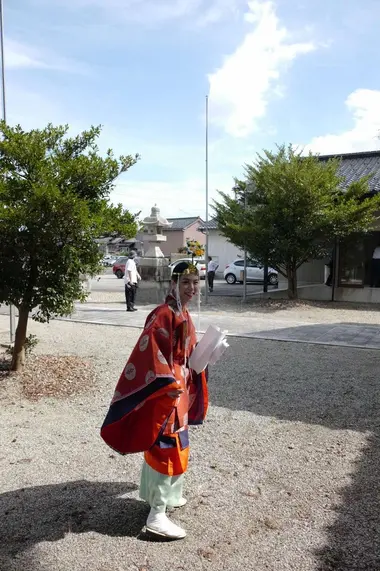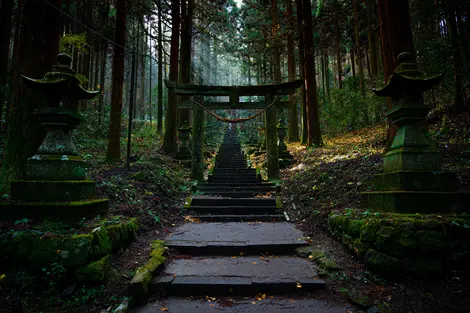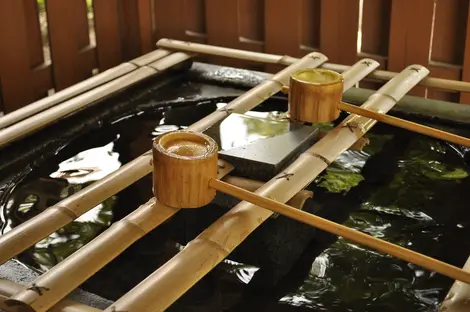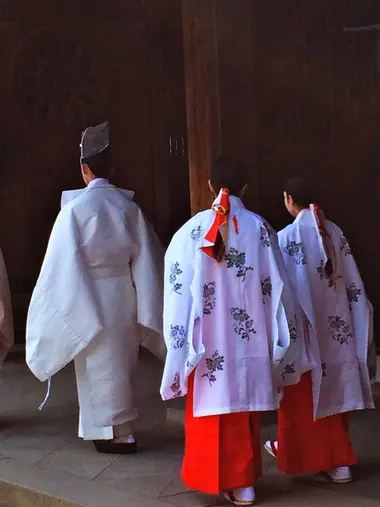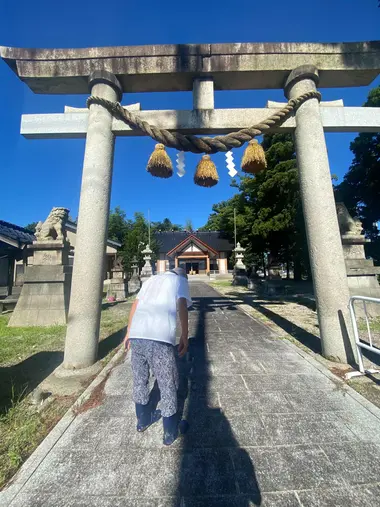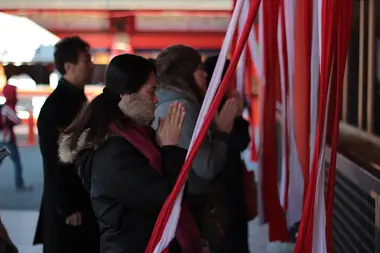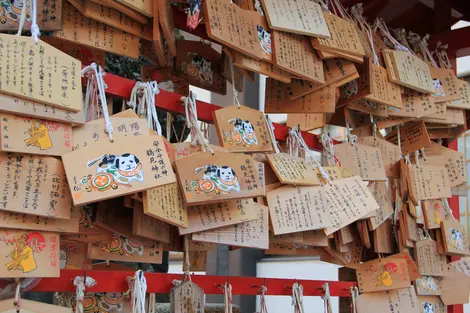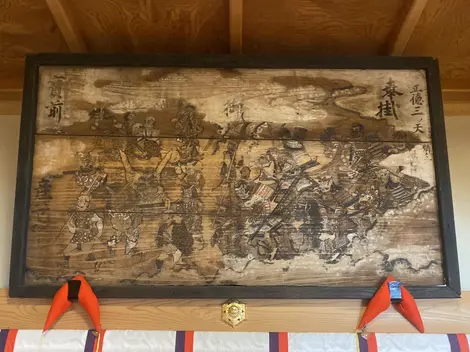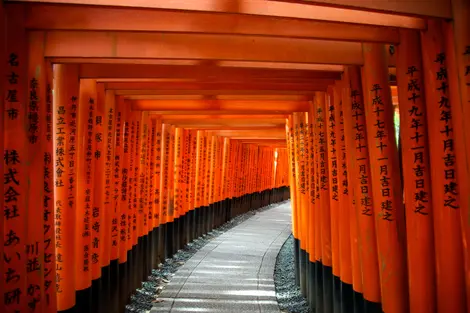Shinto & Shrines 神道と神社
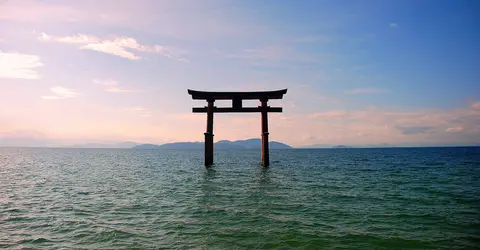
@Unsplash/ Snowscat
A guide for travellers to Japan on Shintoism and visiting shrines with information sourced from a 17th generation Shinto Priestess.
A General Introduction to Shinto
Religion in Japan largely comes in two forms; Buddhism and Shintoism. Buddhism, as many know, is a world-religion that traces its origins back to India and was eventually brought into Japan around the 6th century.
Though it does cite much influence from Chinese culture and Buddhism, Shinto sees both its origins and practices almost fully in Japan, encompassing the culture’s ancient traditions with its influence still being widely visible into the modern-day.
Shinto traditions and influence can be seen in almost every facet of Japanese life, from everyday practices and habits to major holidays and celebrations. It is in this way that Shinto occupies a very unique presence within its native land; well-studied and fully understood by few, yet influential to and embraced by almost all.
Travellers can directly experience this presence at the many jinja (Shinto shrines) that can be found throughout Japan, and 17th generation Kannushi (Shinto Priest/Priestess) Moe Wakamiya of the Tokiwa Shrine in Toyama Prefecture has provided us with insight on what visitors ought to see, understand, and experience when visiting a Shinto shrine.
Shinto is cited as Japan’s indigenous religion and is referenced in written records as early as 300 BC, with its development and legends surely being developed way before even then.
Shintoism is largely rooted in nature, and one of its most unique key aspects is the concept of an insurmountable amount of gods. Within traditional Shinto belief, a unique god exists for practically every feasible object, concept, action, and presence.
This wide array of deities lends to Shinto being labeled the religion of 8 million gods, and out of these many gods, Amaterasu Omikami is the supreme goddess of them all and Japan as a whole and is said to rule from Ise Jingu Shrine in Mie Prefecture. According to Moe Wakamiya, Shinto as-a-whole is a way of finding god and holiness in all aspects of life and carrying a heart of gratitude for even the minute details.
Shinto Shrines in Japan
With the prominence of both Buddhism and Shinto in Japan, one will typically find two types of religious buildings throughout the country. Buddhism is practiced at temples, which in Japanese are called otera (お寺), while Shintoism is practiced at shrines, known as jinja (神社). For notable examples of both, Kiyomizu-dera in Kyoto and Senso-ji in Tokyo are examples of Buddhist temples, while Ise-Jingu in Mie Prefecture and Meiji-Jingu in Tokyo are examples of Shinto shrines. Throughout the entirety of Japan, there are said to be over 100,000 shrines.
These shrines come in many different forms, from very large tourist destinations in major cities, to very small and hidden shrines in secluded, hard-to-reach locations. Walking around anywhere in Japan, one may suddenly stumble upon a shrine.
Most times, these shrines are open to the public and able to be visited at any time of the day or night even when not being tended to by personnel (though access to certain facilities may be limited during certain times of the day or season). This makes Shinto shrines a popular attraction for foreign travellers, but oftentimes, such travellers may be witness to unfamiliar iconography and symbolism. The following is a list of commonly found symbols or objects found at shrines and their cultural/religious significance:
Torii (鳥居) - Usually cited as the universal symbol for Shintoism, the torii gates signify the transition between the mortal realm and the realm of the gods. Torii gates are often the first recognizable motif to signify a Shinto shrine, and its presence is the first immediate differentiator between a Shinto shrine and a Buddhist temple.
Shinmon (神紋) - The shinmon is a crest that is seen as the symbol of the specific shrine. There are a number of shinmon that are well-recognized, not only in Japan, but throughout the world, even if not in major detail. The shinmon often changes depending on the specific god worshiped at a given shrine.
Suzu (鈴) - The word suzu in Japanese refers to any bell, but the ones found at Shinto shrines are said to ward off evil and impurities. They are often rung prior to praying to purify the shrine and surrounding area.
Temizuya (手水舎) - Temizuya is the name of the fountain at Shinto shrines that is used to wash and purify hands before praying.
Tamagushi (玉串) - Tamagushi directly translates to “jewel skewer” in English. It is a decorative offering to the gods made from the branches of a Sakaki tree (which is often planted and sourced within a shrine’s given prefecture), strips of washi (Japanese paper), silk, and or cotton. It is often seen handled and offered to the gods of Shinto shrines during festivals in the summer.
People at Shinto Shrines
One can find a number of personnel tending to and working at Shinto shrines in Japan. Of highest authority is that of the Kannushi, and as we previously mentioned is the title of Moe Wakamiya at her shrine in Toyama. The Kannushi is the main figurehead at a given shrine, leading precessions, conducting rituals and services, along with an array of other responsibilities. They are often seen wearing elaborate robes and headwear, though depending on certain rituals and practices, this attire may change.
Assisting the Kannushi are the Miko, often high school aged girls who service the shrine on their off-time or as part-time work. They can be seen wearing white and red attire, tending to the general needs of the shrine, and also assisting in rituals and ceremonies. At larger temples they can be seen working at stands that sell goods such as omamori (charms that bring upon good fortune or protection) that contribute to funds for maintaining and funding the shrine.
What to experience when visiting a Shinto Shrine
It’s safe to say that Shinto shrines are a rare site outside of Japan, so Wakamiya advocates that travellers take their time and take in as much as they can when visiting a shrine.
Before anything else, it is customary to bow when entering the main torii gate of the shrine and to do so off-center, as the direct center is seen as the primary pathway for the shrine deity. When leaving through the torii gate again, look towards the shrine altar and bow again, once again off-center.
Start by taking the ladle with the right hand and washing the left hand, then switching hands and washing the right hand. Additionally, there are some who choose to cup water into their left hand and sip into their mouth slightly and then spit it out, though if you are not comfortable with this, there is no need.
For the actual prayer, one must go up to the actual altar often sitting in front of the main building of the shrine. The minute details of prayer practices varies between shrines, but in general, the following guidelines are often accepted:
- Throw a coin into the offering box if there is one there. 5 yen coins are often chosen for this due to their association with good relationships.
- If there is a rope-tied-bell, shake the rope to ring the bell, as it is said to ward off impurities and evil.
- Bow twice at around a 90 degree angle.
- Clap twice with straight hands.
- While keeping hands together in front, silently make a prayer and wish.
- Once a wish has been made, bow deeply again at a 90 degree angle, once.
In addition to a traditional prayer, Wakamiya says that a shrine is a nice place for people to relax and roam leisurely, so she advocates really taking in the atmosphere that is often meticulously maintained by the shrine staff.
As previously mentioned, nature is a core element of Shintoism and shrines are often designed around such, encompassing many natural elements and formations with tranquil environments.
Wakamiya also wishes for foreign visitors to inquire about the specific deity that is worshiped at the shrine and to notice the specific details at a shrine that are connected to said deity.
Often displayed at shrines are wooden decorations called ema. Ema usually have wishes written on them along with artwork of many different styles. These ema are hung at shrines and then ceremonially burned later on. Ema also refers to larger, traditional woodblock paintings that are often on display at shrines. At Tokiwa Shrine (the shrine that Wakamiya is the head priestess at), there are a number of ema on display that have been kept at the shrine over the decades. The oldest one on display there dates back to the early 1700s.
In the same vein as ema, paper fortunes called omikuji are also common. Ones with favorable luck are often kept, and ones with more unfortunate luck are tied up and displayed at the shrine.
As previously mentioned, at a number of shrines (especially larger popular ones), goods such as omamori are sold that serve as great personal souvenirs that also help support the shrines.
Wakamiya says that shrines are not just a representation of the Shinto religion, but also the local communities they reside in, often serving as a hub of activity for locals and hosting sites for events.
This can often be seen during festival season during the summer months, so if any travelers find themselves in Japan during this time, Wakamiya suggests visiting a number of shrines to witness the unique cultural practices and talk to the shrine members and shrine head if possible to learn as much as they can about not just Shinto in general, but the unique aspects of a specific shrine and their role in the community.
Things to refrain from at a Shinto shrine
While Wakamiya has a lot of recommendations for foreign travelers at Shinto shrines, there is one thing she noted that they ought to avoid that is likely not common-knowledge in their home countries.
At a Shinto shrine, the middle path that approaches the main building is known as the seichu (正中). This is seen as the path of the gods themselves and thus, it is considered taboo to walk down the center. This correlates with the manners of entering and exiting the torii gates at an off-center that were previously mentioned. Simultaneously, it is best to not turn one's back facing this central path as that can also be seen as disrespectful in traditional Shinto practice. Shinto figureheads model their movements around this concept as well. It is advisable that foreign visitors be wary of such when visiting a shrine, as it is a taboo that can easily be committed unconsciously, even with no ill-intentions behind it.
Naturally, common-courtesy acts regularly practiced at any religious site are advised, such as avoiding making loud noises, smoking, and eating/drinking things other than water.
Shrines to visit when in Japan
With the strong and unique cultural relevance of Shinto with Japan, and the sheer number of shrines throughout the country, visiting a Shinto shrine is a great activity to engage in when visiting Japan. Local shrines such as Moe Wakamiya’s Tokiwa Shrine can be found in any number of neighborhoods anywhere in Japan and going out to explore and find such is highly encouraged, but for some of the most well-known shrines, the previously mentioned Ise-Jingu in Mie Prefecture and Meiji Jingu in Tokyo are visited often even by Japanese travelers from all over the country. Kyoto is often cited as the center for traditional Japan, so it naturally is home to some of the most revered shrines in Japan. Fushimi Inari is one of the most iconic shrines in Japan, famous for its literally thousands of bright, vermilion torii gates that are largely set up consecutively in rows. Finally, Kumano-Nachi Taisha in Wakayama Prefecture is famous for its beautiful views, as it is located halfway up Nachi Mountain looking over the tallest waterfall in all of Japan.
